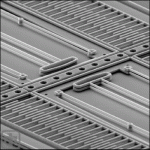Take a look at the figure below and tell me this information did not come from inside Apple. The question is: Was it voluntary or involuntary? Inquiring minds want to know! There are some minor surprises which I will get to in a minute but the actual source information is spot on to what I have heard the past few quarters. This spicy little piece of information comes from the SemiWiki Semiconductor Process Technology Forum by the way. SemiWiki has always been about crowdsourcing and you will not find a better semiconductor crowd than on SemiWiki.com, absolutely.
In the fabless semiconductor industry there is always a lively debate on who will supply chips to whom. For Apple at 20nm it was TSMC versus Samsung. The Taiwan Press said TSMC and the Korean Press said Samsung. Even after it was clear that TSMC had won the A8 business the Korean press still said Samsung was supplying 20-30% of the chips. The Apple A9 has been all over the map. My prediction was that Samsung would get the A9 since their 14nm LP was ahead of TSMC by 3-6 months and TSMC would get the A9x which jibes with the figure above. I also believe that TSMC has the A10. Samsung having the A10x with 10nm is news to me. It was my understanding that Apple was still evaluating 10nm processes. The 10nm PDKs just came out so I would not bet on this one yet.
The other surprises for me are with the specific process nodes. The A9x should not be using TSMC 16nm, it should be TSMC 16FF+, and the A10 should not be 16nm FF+, it should be a new and improved Apple “tuned” version of 16nm. One interesting note, GlobalFoundries is mentioned as a second source for 14nm but not 10nm and obviously Intel Custom Foundry is nowhere to be seen but more on that later.
Notice that the figure says iPad & MAC for the A9x and A10x? Not really a surprise. In fact, I say it’s about time! Sign me up for six of those as long as they are iOS compatible. I really, really, really am sick of Microsoft Windows!
For the Apple iWatch I agree completely. The S1 is a scaled down version of the A7 which is Samsung 28nm. Given that, it is easy to assume the S2 is a scaled down version of the A8 which is TSMC 20nm.
The baseband processors for the next two versions of the iPhones (iPhone 6s and iPhone 7?) are a bit of a surprise as well. Not the vendors so much (QCOMM and Intel) but the fact that Apple does not have them integrated into the A9 and A10 SoCs. To me this is a total technology fail on their part. And it is not only cost but also power and packaging. As THE leading SoC design company Apple should be publicly shamed for this unless I’m missing something here. Why would Apple not integrate the baseband processor like Qualcomn, MediaTek, and other SoC companies already have?
The takeaway I have from this figure is that Apple is intentionally splitting orders amongst the foundries, not necessarily based on technology, but for business reasons. Clearly Apple wants multiple wafer sources and they will do whatever it takes to make that happen.


